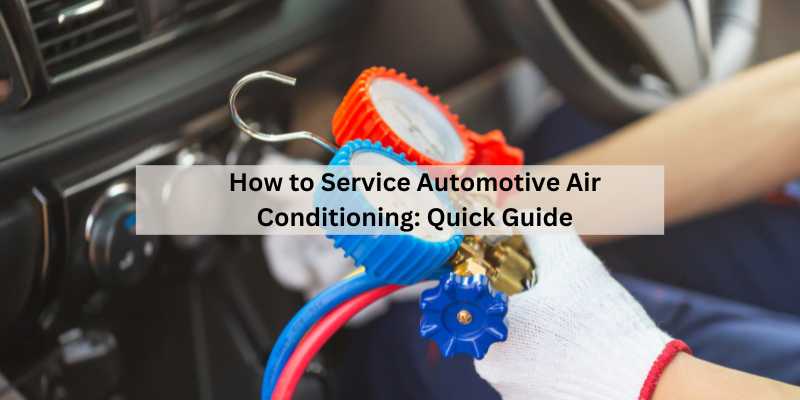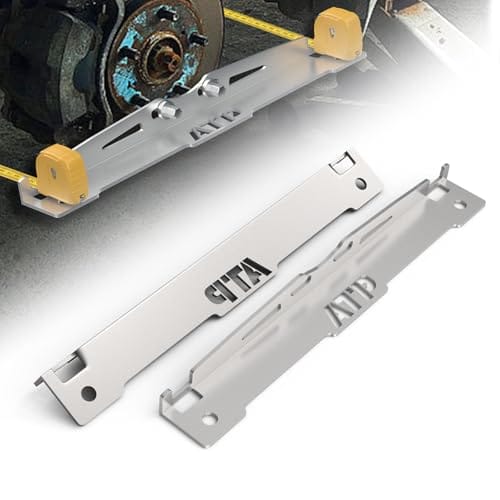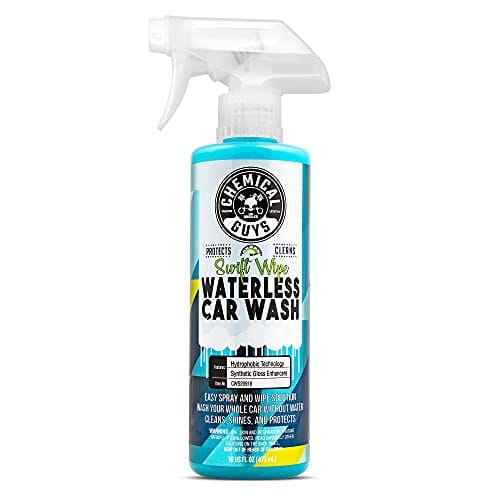How to Service Automotive Air Conditioning: Quick Guide
To service automotive air conditioning, start by turning your car on and checking if the air conditioner is producing cold air. If not, you may need to recharge the system with refrigerant using a recharge kit available at an auto parts store.
Connect the adapters, close the vacuum pump, add compressor oil and UV dye, purge the system, and start the compressor. Finally, add refrigerant to the system and ensure proper AC performance. Regular maintenance includes cleaning the interior ducts, cabin filter, intake vents, AC condenser fan, and condenser, as well as checking fuses, pressure sensors, and vacuum levels.
While some repairs may require professional assistance, low refrigerant levels can be addressed with a recharge kit.
Introduction To Automotive Air Conditioning Service
Learn how to properly service automotive air conditioning with these helpful tips. From checking the AC system charge to cleaning the condenser fan, this guide will ensure your AC is running smoothly and efficiently. Keep your car cool during those hot summer months with these easy steps.
Automotive air conditioning service is an essential part of maintaining your vehicle’s performance and comfort. A properly functioning air conditioning system not only keeps you cool but also filters out impurities from the air you breathe. In this blog post, we will explore the importance of regular maintenance, the tools and materials required, and the steps involved in servicing your car’s air conditioning system.
Importance Of Regular Maintenance
Regular maintenance of your car’s air conditioning system not only ensures optimal performance but also helps prevent costly repairs in the future. Over time, refrigerant levels can deplete, causing the system to work harder and potentially leading to compressor failure. Moreover, a dirty or clogged air filter can reduce airflow and cause the system to work harder, leading to premature wear and tear. Therefore, it is essential to have your air conditioning system serviced regularly to keep it functioning at peak efficiency.
Tools And Materials Required
To service your car’s air conditioning system, you will need several tools and materials, including a refrigerant recovery machine, refrigerant gauge set, vacuum pump, refrigerant, compressor oil, UV dye, and replacement air filter. Additionally, you may need a set of wrenches, screwdrivers, and pliers to access and remove components. It is essential to follow the manufacturer’s guidelines and safety procedures when using these tools and materials to prevent injury and ensure proper system operation.
In conclusion, servicing your car’s air conditioning system is an important part of maintaining its performance and comfort. Regular maintenance, including replacing filters and checking refrigerant levels, can help prevent costly repairs and ensure optimal system performance. With the right tools and materials and following proper procedures, you can service your car’s air conditioning system and enjoy a comfortable ride even in the hottest weather.
Safety First: Preparing To Service Your Ac
Prepare your AC for service by following these steps: 1. Check refrigerant levels and connect adapters. 2. Add compressor oil and UV dye. 3. Purge the system, start the compressor, and add refrigerant. Keep your automotive air conditioning running smoothly with these easy maintenance tips.
Wear Protective Equipment
Always wear safety goggles and gloves.
Use a mask when handling refrigerants.
Understanding The Risks
Avoid skin contact with refrigerants.
Prevent inhaling refrigerant vapors.
Assessing Your Ac System’s Health
Before servicing your automotive air conditioning system, it’s crucial to assess its health. This involves conducting a visual inspection and checking the system pressure to identify any potential issues that may affect its performance.
Visual Inspection
A visual inspection involves examining the various components of the AC system for any signs of damage, leaks, or wear and tear. This includes checking the compressor, condenser, evaporator, and refrigerant lines for visible signs of corrosion, oil leaks, or physical damage.
Checking System Pressure
Checking the system pressure is essential for evaluating the refrigerant levels and the overall functionality of the AC system. This involves using a pressure gauge to measure the high and low side pressures to ensure they are within the manufacturer’s recommended range.
The Refrigerant Recharge Process
To service automotive air conditioning, the refrigerant recharge process is essential. It involves connecting the can and recharging, checking the system’s state of charge, and cleaning up after the process. By following these steps, you can ensure your car’s air conditioning operates efficiently and effectively.
How To Determine Refrigerant Needs
Check the vehicle’s owner’s manual for the specific refrigerant type and capacity required.
Use a refrigerant gauge to measure the current refrigerant level in the system.
Refer to the manufacturer’s guidelines for the correct amount of refrigerant needed for your vehicle.
Step-by-step Guide To Adding Refrigerant
- Turn off the engine and allow it to cool down.
- Locate the low-pressure service port under the hood.
- Attach the refrigerant gauge to the low-pressure port.
- Start the engine and turn the air conditioning to the maximum setting.
- Add the calculated amount of refrigerant to the system slowly.
- Monitor the gauge readings to ensure proper pressure levels.
- Once the correct amount is added, secure the port cap and turn off the engine.
Vacuuming The System
To service automotive air conditioning, start by vacuuming the system to remove contaminants and moisture. Next, add compressor oil and UV dye before purging the system and adding refrigerant. Finally, start the compressor to complete the process efficiently and effectively.
Vacuuming the System is an essential part of servicing automotive air conditioning. It involves removing any remaining refrigerant and moisture from the system to ensure it runs efficiently. In this section, we will look at how to set up the vacuum pump and ensure a proper vacuum is achieved.
Setting Up The Vacuum Pump
To set up the vacuum pump, follow these steps:
- Attach the vacuum pump to the manifold gauge set.
- Connect the blue hose to the low-pressure service port on the vehicle.
- Connect the yellow hose to the vacuum pump.
- Connect the red hose to the high-pressure service port on the vehicle.
Once the vacuum pump is set up, it’s time to ensure a proper vacuum is achieved.
Ensuring A Proper Vacuum
To ensure a proper vacuum is achieved, follow these steps:
- Open both valves on the manifold gauge set.
- Turn on the vacuum pump.
- Allow the vacuum pump to run for at least 30 minutes.
- Check the vacuum gauge to ensure a vacuum of at least 29.9 inches Hg is achieved.
- Close both valves on the manifold gauge set.
- Turn off the vacuum pump.
By following these steps, you can ensure that the automotive air conditioning system is properly vacuumed and ready for the next step in the servicing process. Remember to always follow safety precautions when working with automotive air conditioning systems, such as wearing gloves and eye protection.
In conclusion, vacuuming the system is a crucial step in servicing automotive air conditioning. By properly setting up the vacuum pump and ensuring a proper vacuum, you can ensure the system runs efficiently and safely.
Addressing Common Issues
When servicing automotive air conditioning, it’s essential to address common issues that may arise. By understanding these issues and knowing how to troubleshoot them, you can ensure that the air conditioning system operates efficiently. Let’s take a look at some common problems that can occur and how to address them.
Replacing Fuses And Relays
If your car’s air conditioning system is not functioning properly, a common issue to check for is blown fuses or faulty relays. These components are crucial for the proper operation of the AC system, and if they are defective, it can result in a lack of cooling. To address this issue, follow these steps:
- Locate the fuse box in your vehicle.
- Identify the AC-related fuses and relays.
- Check for any signs of damage or discoloration.
- If any fuses are blown or relays are faulty, replace them with new ones of the same amperage and rating.
- After replacing the fuses and relays, test the air conditioning system to ensure proper functionality.
Cleaning Or Replacing The Condenser Fan
The condenser fan plays a crucial role in dissipating heat from the AC system. Over time, it can become clogged with dirt and debris, hindering its performance. Additionally, the fan motor may wear out, leading to inadequate cooling. To address these issues, consider the following steps:
- Locate the condenser fan in your vehicle.
- Inspect the fan blades for any dirt or debris accumulation.
- Clean the fan blades using a soft brush or compressed air to remove any buildup.
- If the fan motor is malfunctioning, consider replacing it with a new one to ensure optimal cooling performance.
- After cleaning or replacing the condenser fan, test the air conditioning system to verify improved airflow and cooling efficiency.
Enhancing Ac Efficiency
Enhancing AC efficiency is crucial for optimal performance, especially during hot weather. To service automotive air conditioning, start by checking the system’s charge, cleaning and replacing filters, straightening coil fins, and unclogging drain channels. Verify proper airflow around the unit and level the condenser unit for best results.
Cleaning Interior Ducts And Filters
To enhance AC efficiency, clean interior ducts and filters regularly.
Ensuring Adequate Airflow
Ensure proper airflow by checking vents and fans for blockages.
Regular maintenance of interior ducts and filters is crucial for optimal AC performance. Dust and debris can accumulate, hindering airflow and reducing efficiency. Cleaning these components ensures that cool air circulates effectively throughout the vehicle.
To maintain adequate airflow, inspect and clean the interior ducts and filters at least once a month. Remove any debris or buildup that could restrict the flow of air. This simple step can significantly improve the cooling capacity of your vehicle’s AC system.
In addition to cleaning interior components, check the exterior vents and intake areas for any obstructions. Leaves, dirt, or debris can block airflow and reduce the system’s efficiency. Regularly clear these areas to ensure proper ventilation and cooling performance.
Final Checks And Performance Testing
After completing the necessary repairs and recharging the system, the final step in servicing automotive air conditioning involves conducting performance testing and a series of final checks. This ensures that the system is functioning optimally and that there are no leaks or issues that could affect its performance.
Observing The Ac In Operation
Check for proper airflow and temperature consistency in the vehicle.
Troubleshooting Post-service Issues
Address any unusual noises or odors coming from the air conditioning system.
Before completing the service, it’s crucial to conduct final checks and performance testing to ensure the automotive air conditioning system functions optimally.
- Inspect the AC for proper airflow and consistent temperature.
- Check for any unusual noises or odors post-service.
- Verify that the system is cooling effectively.
When To Seek Professional Help
If you are experiencing issues with your automotive air conditioning, it may be time to seek professional help. Properly servicing the system is crucial for optimal performance and comfort. Consider consulting a trained technician to diagnose and address any problems, ensuring your air conditioning is in top condition.
While DIY troubleshooting and basic maintenance can address many automotive air conditioning (AC) issues, there are instances when seeking professional help is necessary. Complicated problems and technical intricacies may require the expertise of a trained professional to ensure the AC system is properly diagnosed and repaired.
Identifying Complex Ac Problems
Identifying complex AC problems can be challenging for those without technical expertise. Issues such as refrigerant leaks, compressor malfunctions, or electrical faults often require specialized equipment and diagnostic tools to pinpoint the exact cause. Professional technicians are equipped to conduct thorough inspections and accurately identify complex AC issues.
Benefits Of Expert Servicing
Professional servicing offers numerous benefits, including accurate diagnosis, skilled repairs, and the assurance of safety and quality. Trained technicians possess in-depth knowledge and experience, enabling them to address complex AC problems efficiently and effectively. Moreover, professional servicing ensures compliance with industry standards and regulations, providing peace of mind for vehicle owners.
Frequently Asked Questions
How To Service Air Conditioning In Car?
To service your car’s air conditioning, follow these steps: 1. Clean the interior ducts and intake vents. 2. Replace or clean the cabin filter. 3. Clean the AC condenser fan and condenser. 4. Air out the system. 5. If necessary, recharge the AC system or fix any issues with the help of a professional.
Regular maintenance is important to keep your car’s AC in good shape.
What Maintenance Does A Car Ac Need?
Regular maintenance for a car AC includes cleaning interior ducts, replacing cabin filters, cleaning intake vents, cleaning the AC condenser fan and condenser, and ensuring proper airflow around the unit. You can also recharge the AC system using a recharge kit if it’s low on refrigerant.
It’s important to note that substantial repairs may require professional assistance.
How Do I Service My Ac Myself?
To service your AC yourself, follow these steps: 1. Turn off the power and clear any debris. 2. Clean or replace the AC filters. 3. Check and clean the evaporator and condenser coils. 4. Straighten coil fins and unclog drain channels.
5. Ensure proper airflow around the unit and level the condenser. Remember, for substantial repairs, it’s best to consult a professional.
Can I Fix My Car Ac Myself?
Yes, you can recharge your car AC yourself with a recharge kit from an auto parts store.
Conclusion
Servicing your automotive air conditioning is essential to ensure optimal performance and comfort while driving. By following the proper steps, such as recharging the system, checking for leaks, and cleaning the components, you can maintain a cool and comfortable environment inside your vehicle.
Regular maintenance and servicing will not only improve the efficiency of your air conditioning system but also prolong its lifespan. Remember, it’s always a good idea to consult a professional if you’re unsure or need assistance with more complex repairs.
Keep your car’s air conditioning in top shape and enjoy a pleasant driving experience.







